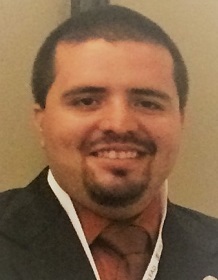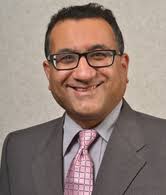Day 1 :
Keynote Forum
Dr. Abhisekh B.P
Department of speech language pathology, AIISH, India
Keynote: Relationship between Brain and Behaviour: Evidence from Aphasia

Biography:
Abstract:
Statement of the Problem: Aphasia refers to acquired neurological disorder caused due to lesion in the brain. It is caused due to stroke, trauma and tumour. The characteristics of aphasia are directly dependent on the size and site of lesion. This neuron-pathological evidence enables in understanding the brain-behaviour relationship. Methodology & Theoretical Orientation: The study would involve a retrospective design. 4 cases with different site of lesion would be considered and the characteristics of these cases in regard to comprehension, expression, repetition, naming, reading and writing. Conclusion & Significance: Through the case studies, the relationship between brain and behaviour would be analysed and thus the neuron-pathological evidence would serve as a tool in understanding how behaviours are controlled by brain and how impairment at the level of brain can cause language deficits.
Keynote Forum
Dr. Nitin Telang
Palindrome Liaisons Consultants, New Jersy, USA
Keynote: Breast Cancer Stem Cell Models for Therapeutic Alternatives
Time : 11:00am

Biography:
Prof.Nitin Telang obtained his PhD degree in Experimental Embryology in 1974 from the University of Poona, India. He immigrated to the USA in 1976, and obtained his post-doctoral training at the University of Nebraska, Lincoln, NE, American Health Foundation, Valhalla, NY and Sloan-Kettering Institute New York, NY (1976-1985). During his post-doctoral training, he conducted research on the initiation and progression of breast and colon carcinogenesis in organ cultures of target tissue. As a faculty member, Dr Telang served as Attending Biochemist, Department of Surgery, Memorial Sloan-Kettering Cancer Center, New York, NY (1985-1991), and as Associate Professor, Department of Surgery, Weill-Cornell Medical College, New York, NY (1991-2004). His last academic appointment was as Senior Scientist, and Director, Carcinogenesis and Prevention Laboratory, Strang Cancer Prevention Center, New York, NY (2004-2007).
Abstract:
Rationale: Progression of breast cancer to advanced stage metastatic disease represents a major cause of mortality in women. Therapeutic options of conventional chemo-endocrine and molecularly targeted interventions are associated with spontaneous or acquired resistance and emergence of chemo-resistant cancer initiating premalignant stem cell population. These limitations emphasize development of reliable stem cell models for identifying testable therapeutic alternatives.
Research Outcome: Drug-resistant stem cell models relevant to select clinical breast cancer subtypes exhibit progressive growth and increased tumour spheroid formation in response to cytotoxic concentrations of mechanistically distinct small molecule inhibitors Tamoxifen (TAM), Lapatinib (LAP) and Doxorubicin (DOX). The drug-resistant TAM-R, LAP-R and DOX-R phenotypes exhibit unregulated expressions of cell surface protein CD44 and nuclear transcription factors NANOG and OCT-4. Treatment of LAP-R stem cell model with naturally-occurring vitamin A derivative all-trans retinoic acid (ATRA) and terpene carnosol (CSOL) inhibit tumour spheroid formation and down regulate the expressions of CD44, NANOG and OCT-4.
Conclusions: Development and characterization of drug-resistant stem cell models and inhibitory efficacy of natural products validate a novel mechanism-based experimental approach. This approach may facilitate prioritization of efficacious pharmacological agents, dietary phytochemicals and bioactive compounds from nutritional herbs as testable alternatives against therapy-resistant breast cancer.
Keynote Forum
Dr. Rafael Torres-Valadez
Autonomous University of Nayarit Mexico
Keynote: Impact of Nutrient Interactions with polymorphism of DRD2, APOE and OCT1 Genes on Glycaemic and Lipidic Control in Type 2 Diabetes Patients from Western Mexico: Implications for Genomic Medicine

Biography:
Dr. Rafael Torres is Medical Doctor and PhD in Molecular Biology in Medicine. Currently works as a professor in the academic unit of integral health at the Autonomous University of Nayarit, Mexico. He is a researcher in the unit specialized in Genomic Medicine at the Nayarita Center for Innovation and Technology Transfer (CENIT2). He is a member of the National System of Researchers and qualified scientific reviewer of the National Council of Science and Technology (CONACYT), Mexico. He is the author and co-author of multiple original articles published in indexed international journals. Speaker at national and international conferences and co-author of the book chapters. He develops the lines of generation and application of knowledge in genomic medicine, genetic susceptibility of chronic diseases such as diabetes, obesity, dyslipidaemias, and cardiovascular disease; studies of nutrigenetics and nutrigenomics, and studies in pharmacogenetics.
Abstract:
Statement of the Problem: Genetic and nutritional factors substantially explain the metabolic control sought in patients with type 2 Diabetes (T2D). In this context, DRD2/ANKK1 TaqIA polymorphism has been involved in addictive behaviours toward energy-dense foods. Besides, some studies have found association of APOE alleles with differential metabolic phenotypes depending on the dietary intake, and Met408Val SLC22A1/OCT1 polymorphism has been explored with glycaemic control in T2D patients. These genetic polymorphisms could influence the metabolic control of these patients according to their diet. The purpose of this study was to analyse of clinically relevant interactions between nutritional factors and DRD2/ANKK1 TaqIA, APOE (ε2, ε3, ε4) and SLC22A1/OCT1 Met408Val polymorphisms on glycaemic and lipidic control in T2D patients from western Mexico.
Methodology: A total of 432 T2D patients were enrolled. Diet and biochemical profile were recorded. Genotyping of DRD2/ANKK1 TaqIA was performed by PCR-RFLP method and APOE & SLC22A1/OCT1 genotyping were performed by real-time allelic discrimination assays. Gene-diet interactions were screened by adjusted multiple linear regression analyses.
Findings: No significant differences were found in clinical and nutritional parameters. Significant alleles-by-diet interactions on metabolic profile were found. DRD2/ANKK1 TaqIA, A1 allele carriers were protected from triglycerides increases by maltose intake (P int. =0.023). APOE alleles, higher blood levels of total cholesterol (P int. =0.016) were found in ε2 allele carriers with a low consumption of MUFA, and ε4 allele carriers with a high ω-6: ω-3 PUFA ratio in the diet had higher %HbA1c (P int. =0.035). SLC22A1/OCT1, an interaction was found between calcium intake and carriers of the risk allele A (408Val) with %HbA1c (P int. =0.028).
Conclusion & Significance: This work documents a differential effect of the polymorphic alleles of the DRD2/ANKK1, APOE and SLC22A1/OCT1 genes on the metabolic control of T2D patients according to their dietary intake, with important potential implications in the genomic and personalized medicine.
Keynote Forum
Racheal Nalunkuma
Makerere University College of Health Sciences Uganda
Keynote: Commentary: Paediatric HIV-associated Kaposi Sarcoma in Uganda

Biography:
Dr. Racheal Nalunkuma is a junior medical doctor at Mengo Hospital, Kampala-Uganda, undertaking her one-year medical internship training which is mandatory to be assigned a working medical license in Uganda. She is a graduate with a Bachelor of Medicine and Bachelor of Surgery, with a background degree in Biomedical Science. Both degrees from Makerere University-college of Health Sciences, Kampala Uganda.
Dr. Racheal is enthusiastic about Global Health and activities aiming at achieving the 3rd Sustainable Development Goal. She is subscribed to the Uganda society for health scientists. She has about 3 years of experience in both clinical and public health research with interests in Infectious diseases and non-communicable diseases. She has authored and co-authored about 9+ publications in peer-reviewed journals that have contributed to improving the health care system and service advocacy
Abstract:
Interested in knowing more about Pediatric HIV-associated Kaposi sarcoma in Uganda, an extensive literature search was done. Despite the advances in the health care system, HIV infection prevalence is still great in Africa. In the sub-Saharan region, Kaposi sarcoma (KS) endemicity is known to be great in Uganda. KS has been labeled as the commonest AIDS-defining malignancy among PLHIV and its prevalence among the pediatric group ranks as a common childhood tumor. It’s known to be caused by Human herpesvirus (HHV) 8 whose seroprevalence is high in Africa. Among children, the HHV-8 infection is noted to be either acquired intrapartum or postpartum, which increases their risk of developing KS. Typically, KS Lymph node involvement is the commonest in the pediatric group compared to the cutaneous, oral, and visceral forms in adults. Any child with HIV who presents with a likely lesion should be screened for KS. Its diagnosis is confirmed by the detection of a viral protein latency-associated nuclear antigen (LANA) in a biopsy. In Uganda, pediatric KS cases account for 23% and 32% among 3-5 years and 10-13-year-old children respectively. A study that was carried out by Judith Asasira et al, to stipulate cancer prevalence by 2030 in Uganda, showed a marked decrease in KS cases in Uganda by 22.6% (19.9% in men and 17.6% in women). Achieving this requires addressing the barriers that limit the implementation of interventions that aim at eliminating mother-to-child transmission of HIV infection, timely initiation of Nevirapine antiretroviral therapy (ART) among sero-exposed neonates, and early initiation of ART to newly diagnosed HIV children decreases the prevalence and complications of pediatric HIV. Timely initiation of KS chemotherapeutic drugs favors a good prognostic outcome among the affected children. Success towards HHV 8 vaccine development will also drastically reduce the KS prevalence among the pediatric group.
Keynote Forum
Dr. Anil Parwani
Director The Ohio State University United States
Keynote: Digital Pathology

Biography:
Pathology, Anatomical Pathology, Digital Pathologysurgical pathology, viral immunology and pathology informatics including designing quality assurance tools, bio banking informatics, clinical and research data integration, applications of whole slide imaging, digital imaging, telepathology, image analysis and lab automation
Abstract:
Keynote Forum
Dr. Anshoo Agarwal
Swami Vivekanand Subharti University, Meerut India
Keynote: Cyclin D1, E-cadherin, EGFR, HER- 2, Ki67, and p53 tumor marker expressions in neoplastic and non -neoplastic Gall bladder lesions and their clinicopathological correlation

Biography:
Dr. Anshoo Agarwal is currently working as Professor and Chairperson at Department of Pathology, Northern Border University, Arar Kingdom of Saudi Arabia. She received her Bachelor of Medicine & Bachelor of Surgery from King George's Medical College Lucknow. Dr. Anshoo Agarwal received her M.D in Pathology from LLRM Medical College / Ch. Charan Singh University. She is an Associate professor and Discipline Coordinator in University Technology MARA, Malaysia. Dr. Anshoo Agarwal has served on many scientific memberships like Life member of Indian Association of Pathology and Microbiology, Member of International Academy Pathology, Life member of Indian Society of Hematology & Transfusion Medicine, Emirates Medical Association Pathology Society. Dr. Anshoo Agarwal has more than 80 publications. Dr. Anshoo Agarwal is editorial member of 3 journals and has many reviewed publications. Dr. Anshoo Agarwal research interests include Advance Hematology & Immunohematology, Breast cancer and anticancer vaccines
Abstract:
Gall bladder carcinoma (GBC) corresponds to 1.13 per million in the US. The incidence is high in females and it represent almost three fourths of GBC victims and their highest incidence rate occur in this region, yet only few immunomarker studies are available from this high-predisposing region. GBC has also been reported to show a variable expression pattern among different ethnic groups. GBC results via the dysplasia-metaplasia sequence and the 5-year survival rate for GBC is 32% and for the advanced stage it is only 10%. Current studies have focused on the importance of Cyclin D1, E-cadherin, EGFR, HER- 2, Ki67, and p53 immunomarkers in the development and prognosis of GBC. One of the most genetic aberrations is ascribed to be HER-2 in GBC. HER-2 and other immunomarkers Cyclin D1, E-cadherin, EGFR, Ki67, and p53 can be easily assessed by standard immunohistochemistry methods. However, concrete results have not been obtained due to a limited number of resectable GBC cases presented at the hospitals. We, therefore, attempt to evaluate the immune-expression of these markers in GBC cases and determine their prognostic value in the selected GBC cohort.
Keynote Forum
Dr. Dritan Reovica
University Hospital Centre Mother Teresa Albania
Keynote: Gastric Cancer Surgery

Biography:
He is a medical doctor and surgeon from Tirana, Albania. He graduated in 1995 from the Faculty of Medicine, University of Tirana, Albania. Afterwards, he specialised for four years in the surgical department, and he is currently working at the University Hospital Centre "Mother Teresa" in Tirana in the surgical division. He is currently doing his Phd in this domain at Tirana University, in Tirana, Albania.
Abstract:
Stomach cancer is widespread in many countries of the world and accounts for 7.7% of mortality from all types of tumours. The main curative procedure remains surgical intervention along with other therapeutic procedures, despite the development of different aspects of oncology such as chemotherapy and radiotherapy which have a modest result. Two main methods are applied, which are the use of neoadjuvant therapy before performing total gastrectomy and the other method is performing resection and after the administration of chemotherapy. Based on these concepts, a downward trend in the incidence of stomach cancer is observed, accompanied by screening, early diagnosis and prevention. In most cases, gastric cancer is detected when it has spread locally or when it has developed metastases in other organs and the average survival of patients is low. The surgical management of gastric cancer should be performed by a team of doctors from different specialties and in appropriate clinical centres. Some aspects that affect the patient's outcome are the spread of lymph nodes, surgical technique and performing resection of the margins. In order to have the best outcome for the patient, the surgical treatment should be standardized based on his individual characteristics. The extent of surgical resection required to achieve surgical margins free of malignant cells, R0, depends on the size, location, and histological type of the tumor. Based on the histological type of the tumor, the appropriate length of the margin is recommended to be 3 to 5 cm. However, recent studies suggest that resection margins of 1 cm may be comparable in terms of survival and oncological outcome. Since the standard approach for gastric cancer with any localization is total gastrectomy (TG), several studies have shown that the outcomes of patients with proximal tumors who underwent TG or proximal gastrectomy were similar in terms of the overall survival interval and disease-free interval. Following these studies, it is accepted today that both procedures could be accomplished safely.
Keynote Forum
Dr. Genc Nurja
Department of Neuroscience Albania
Keynote: Ischemic Stroke Prevention and Treatment

Biography:
He is a medical doctor and a neurologist from Albania. He graduated in 1992 from the Faculty of Medicine, University of Tirana, Albania. In 2002, he commenced a four-year residency in infectious diseases and worked at the neurological department of the Regional Hospital of Shkodra. Currently, he is doing his PhD in neurology at University of Medicine, in Tirana, Albania.
Abstract:
Ischemic stroke is also included among the main causes of mortality and disability in the world. Patients who have previously suffered from an ischemic stroke, as well as patients who have had a transient ischemic attack (TIA), are more at risk. The use of anticoagulant and anti-thrombotic drugs is the most typical example for the prevention of ischemic stroke. The effect of antithrombotic therapy for the prevention of stroke yields better results if it is used in patients without cardio embolism and of anticoagulants when they are used in patients with cardio embolism. The efficacy of each of these medications has been shown in clinical trials conducted in several study centers. Aggrenox and clopidogrel together with aspirin are among the most frequently used antithrombotic drugs in daily clinical practice. While warfarin, rivaroxaban and dabigatran are the main representatives of anticoagulant medications. The mechanism of action of each of these medications is unique, however, they have in common some side effects, such as hemorrhagic phenomena from different organs, especially in patients in serious condition. The management of patients with ischemic stroke or TIA requires special care and attention from the attending physician regarding the prescription of anticoagulant or antithrombotic medications, assessing the risk of either deterioration of the patient's condition or improvement from the administration of these therapies. Individuals who survive a stroke often face long-lasting health and financial consequences. Commonly used antiplatelet medications include aspirin, clopidogrel, and Aggrenox, while a commonly used anticoagulant is warfarin. Recently, good clinical results as replacement therapy of warfarin are giving direct oral anticoagulants. The DOACs offer a major advantage over warfarin therapy by decreasing the risk of ICH, eliminating the need to adjust the dosing for targeted INR range, and patients do not need to implement dietary restrictions. Due to their shorter half-lives, however, patients taking DOACs must be more rigorous in following their prescribed regimen. Each drug has a separate mechanism of action and under certain circumstances may be recommended over other treatment options. As such, clinicians must carefully weigh the relative benefits with potential side effects when deciding an appropriate treatment regimen.
Keynote Forum
Dr. Artan Shkurti
Faculty of Medical Technical Sciences Albania
Keynote: Rheumatoid Arthritis and Cardiac Risk Factors

Biography:
Artan Shkurti is a medical doctor, rheumatologist from Vlora, Albania. He graduated on 1992 from the Faculty of Medicine, University of Tirana, Albania. In 2005 he commenced the three year residency in rheumatology and work at the regional hospital of Vlora, Albania. Currently he is doing PhD in rheumatology from Tirana University, in Tirana - Albania. His research focuses on metabolic syndrome in rheumatic disease.
Abstract:
It has already been known for two decades now that the life expectancy at birth of patients with rheumatoid arthritis (RA) is lower than that of other individuals in the population. The risk of death is directly related to the severity of the disease and inversely related to the age of disease onset. Also, in these patients, the frequency of cardiovascular diseases (CVD) and acute myocardial infarction (AMI) is several times higher and is certainly one of the important causes of death. The prevalence of metabolic syndrome (MetS) is very high among these patients. The purpose of this study was to evaluate the frequency occurrence of (MetS) in patient with RA and their association.

Biography:
Dr. Floreta Kurti is a medical doctor, pediatricin, from Tirana, Albania. She graduated on 1995 from the Faculty of Medicine, University of Tirana, Albania. Afterwards she was specialized for four years in Pediatric Department and currently he work at the Pediatric Emergency Department at University Hospital Centre “Mother Teresa” in Tirana. Currently she is doing her PhD in this domain at Tirana University, in Tirana – Albania
Abstract:
Infections caused by viruses are universal during childhood and adolescence. Clinicians will regularly care for children and adolescents who present with infections caused by a wide number of viral pathogens. Each viral infectious disease has its own specific clinical presentation depending on the causative virus; however, the clinical picture may change depending on the patient's sociodemographic characteristics and immunocompetence status. In some cases, children can contract the infection from the mother during pregnancy (rubella virus, parvovirus B19, cytomegalovirus,) or can be infected during the delivery procedure, and in most cases children are affected by common seasonal respiratory viruses during childhood (influenza virus, rhinovirus). Infection of the new born with a virus produces a variety of clinical presentations, ranging from absence of symptoms to infection before (congenital), during (natal), or after birth (postnatal). Because of the affinity of viruses for rapidly growing cells, new-born infection results in multiple outcomes that are determined by the specific virus and the gestational age at the onset of infection. Congenital viral infections may result in miscarriage or stillbirth, congenital defects of various organ systems, clinical infection, or asymptomatic infection. Natal and postnatal infections can result in asymptomatic infection or clinical infection. Outcomes of clinical infection can vary from recovery to persistent infection with or without sequelae to death.
Due to extended immunization several viral diseases of previous century have been eliminated or eradicated and do not pose a risk to children any more. Despite that effort nowadays it is important to increase the coverage of vaccine-preventable diseases to avoid outbreaks of any of these diseases that unfortunately were notified and continue to be notified from several countries in different continents. Re-emergence of several viral agents can be prevented by strengthening national immunization programs. Also, development of antiviral medications is of great contribution to a successful treatment despite the fact that only symptomatic treatment is needed for most of viral infection in children. Usually illnesses are self-limited and children are fully recovered.
Keynote Forum
Dr. Edmond Nica
University Hospital Centre Mother Teresa Albania
Keynote: Imaging for Diabetic Arteriopathy

Biography:
Dr. Edmond Nica is a medical doctor, radiologist, from Tirana, Albania. He graduated on 1998 from the Faculty of Medicine, University of Tirana, Albania. Afterwards he was specialized for four years in Radiology Department and currently he work at the at the University Hospital Centre “Mother Teresa” in Tirana at imagery division. Currently he is doing his Phd in this domain at Tirana University, in Tirana - Albania.
Abstract:
Peripheral vascular disease commonly referred to as peripheral arterial disease (PAD) or peripheral arterial occlusive disease refers to obstruction of the arteries of the extremities. Since atherosclerosis of the lower extremities is a major pathology for systemic atherosclerotic diseases, these patients are at increased risk for systemic morbidity. Acute peripheral arterial occlusions usually involve the infrainguinal segment. The essence of atherosclerotic disease lies in intraluminal stenosis, impeding blood circulation and causing acute thrombosis. Emboli usually lodge at bifurcations, but may also involve arterial segments, resulting in turbulent distal flow and impaired tissue perfusion. This disease is an independent risk factor for vascular disease in other regions, resulting in an increased chance of cardiovascular events and increased mortality. It negatively affects the functional condition of the limbs, causing a decrease in the quality of life. The aim is to assess the effectiveness of MDCT angiography and colour Doppler ultrasonography in the diagnosis of peripheral vascular disease of the lower limbs.
Keynote Forum
Dr. Herion Dredha
Urology department Albania
Keynote: Vesicle Dysfunction and Disc Disease

Biography:
Dr. Herion Dredha a medical doctor, surgeon urologist from Tirana, Albania. He graduated on 2000 from the Faculty of Medicine, University of Tirana, Albania. Afterwards he was specialized for four years in Urology and currently he work at the at the University Hospital Centre “Mother Teresa” in Tirana at urological department. Currently he is doing Phd in this domain at Tirana University, in Tirana - Albania
Abstract:
Research has demonstrated that herniated intervertebral disc can cause several disturbances related to urination. Disturbance of the urinary bladder function occurs more as a consequence of the lesions of several nerves than the damage of only one nerve caused by disc lesions. The more numerous the disc lesions, the more serious is the disorder of bladder function. Difficulties of diagnosis arise especially in the occult type, but certain features are helpful in suggesting the condition and indicating the need for further investigation. As in any other neurological disease the symptoms and signs depend on the level of the lesion. The essential features of a classical prolapsed disc are due to pressure on a nerve root, lumbar lesions being more likely to affect the bladder than protrusions higher up the spinal column. Disturbances of bladder function, usually transient but occasionally persistent, may occur after operations for prolapsed intervertebral disc. Such postoperative urinary troubles have become uncommon with improvements in technique, such as the fenestration procedure. Of greater interest, and certainly of greater importance, are neural lesions due to a prolapsed lumbar disc causing bladder symptoms in patients with minimal or absent back or leg pain. Probably the usual disc lesion escapes the neural complications of bladder dysfunction as only one root is compressed. Vesical dysfunction is more likely to occur when the annularis is ruptured and the whole vertebral canal is filled by the nuclear mass or when there are multiple disc protrusions. The annulus is weaker posteriorly and its rupture allows the nucleus pulposus to protrude. Such disc lesions are commonly posterolateral in site, medial or massive central protrusions being less common. Some patients with disc lesions causing bladder dysfunction have been diagnosed as "hysterical" or their symptoms labelled as functional because of minimal physical signs," and it is probable that the condition is not uncommon.
Keynote Forum
Dr. Arben Preza
Pediatric Hospital, UHC Mother Teresa Albania
Keynote: Characteristics of Brain Tumours in Childhood

Biography:
Dr. Arben Preza is a medical doctor, anatomopathologist from Tirana, Albania. He graduated on 1991 from the Faculty of Medicine, University of Tirana, Albania. Afterwards he was specialized for four years in anatomical pathology and works at the at the University Hospital centre “Mother Teresa” in Tirana. Currently he is doing PhD in this domain at Tirana University, in Tirana - Albania.
Abstract:
Cerebral tumours can often be found in children are and can be benign and malignant. After leukaemia, childhood brain tumour is the second most common type of cancer in all children worldwide. Typically, brain tumours in children arise from different tissues than those affecting adults. Posterior fossa tumours are frequent, almost as much as supratentorial ones, although they also depend on age. Supratentorial tumours are more common in children younger than 3 years, while posterior fossa tumours predominate in children 3 to 11 years old. After this age, the incidence of these supra and infra tentoria tumours is the same. According to the 2007 WHO classification, tumours are classified according to type and histological grade (degree of malignancy). Benign tumours are grade 1 and 2, while grade 3 and 4 are malignant tumours. In children, there is a pronounced heterogeneity of histological types, both in malignant and benign tumours. In 80% of cases, primary neuroepithelial tumors are encountered, while 3-5% is craniopharyngeoma and germ cell tumors.
The commonest of the neuroepithelial tumours are the gliomas (30 - 50%), particularly pilocytic astrocytoma (20% of primary neuroepithelial tumours), followed in descending order by neuronal and mixed glioneuronal tumours, which account for approximately 19% embryonic tumours, which account for 17% and ependymomas which account for approximately 11%. Treatment can be surgical, radiosurgical, radio therapeutic or chemotherapeutic. Not infrequently, a combination of different modalities may be necessary, which is carried out in collaboration with colleagues from other services such as: neuropediatrics, neuroimaging, infant surgery, paediatric intensive care unit, oncohematology. Recently the surgical techniques, tools in the operating room and anaesthesia techniques have improved, making interventions safer. Also, complementary modalities (radiotherapy/chemotherapy) have advanced.
